Ducati 175 Sport
With Ian Falloon
Although the 100 cc Gran Sport, or Marianna, was Ing. Fabio Taglioni’s first design for Ducati, the first series production motorcycle to bear his stamp was the 175 Sport. The Gran Sport was released in 1955 as a hand-built racer, manufactured in small numbers for the Giro d’Italia and Milano-Taranto road races around Italy.
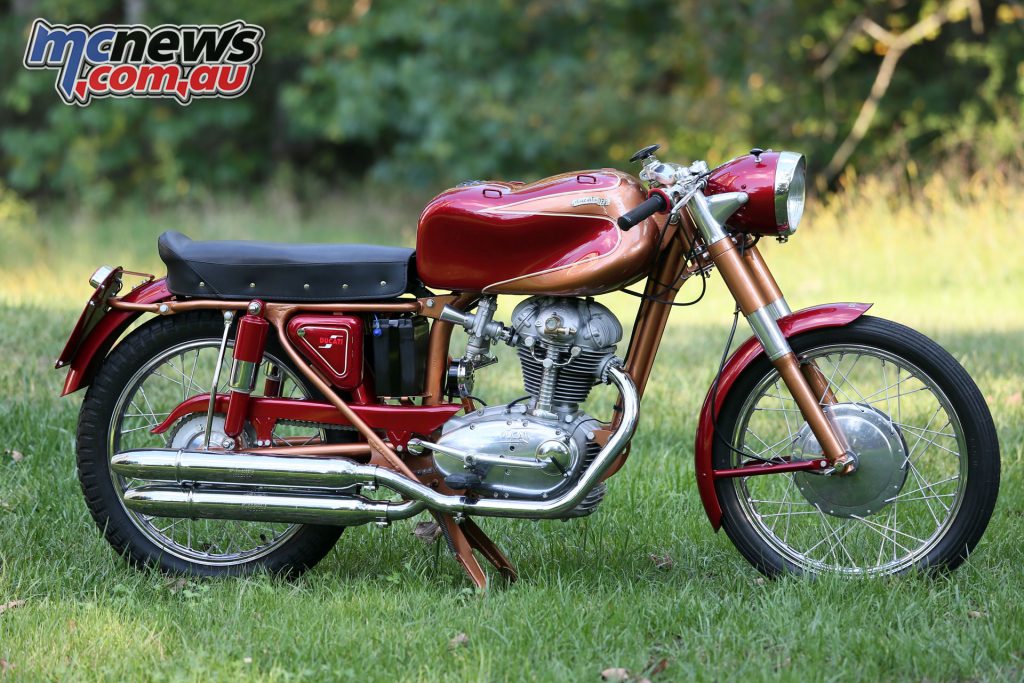
While outstandingly successful, Taglioni realised that there was no point in having a successful racer without a comparable production version. So only two years later Ducati introduced the 175 Sport. This began a trend that continues today and for nearly seventy years Ducati’s reputation has been built on production adaptations of successful racers.
As the first production bevel-drive single, the 175 Sport begat the later 200, 250, 350, and 450 singles and established a blueprint for all Ducati production overhead camshaft singles until their demise in 1974. Even the bevel-drive 750, 900 and 1000 V-Twins share the 175’s genetic code, and some of the Pantah, four-valve Desmoquattro and the current Testastretta design features can be traced back to that first production single.
The heart of the little engine was a set of vertically split die-cast aluminium alloy crankcases, with a tower shaft and two sets of bevel gears driving a single overhead camshaft. Hairpin springs closed the valves, but unlike the Gran Sport these were enclosed to keep the engine more oil tight.
Other trademarks that would carry though for nearly thirty years included a pressed-together crankshaft riding in ball bearings. This carried a one-piece con-rod with a bushed small end and roller bearing big end. Primary drive was by helically cut gears and the gearbox had only four-speeds, a standard feature for the period.
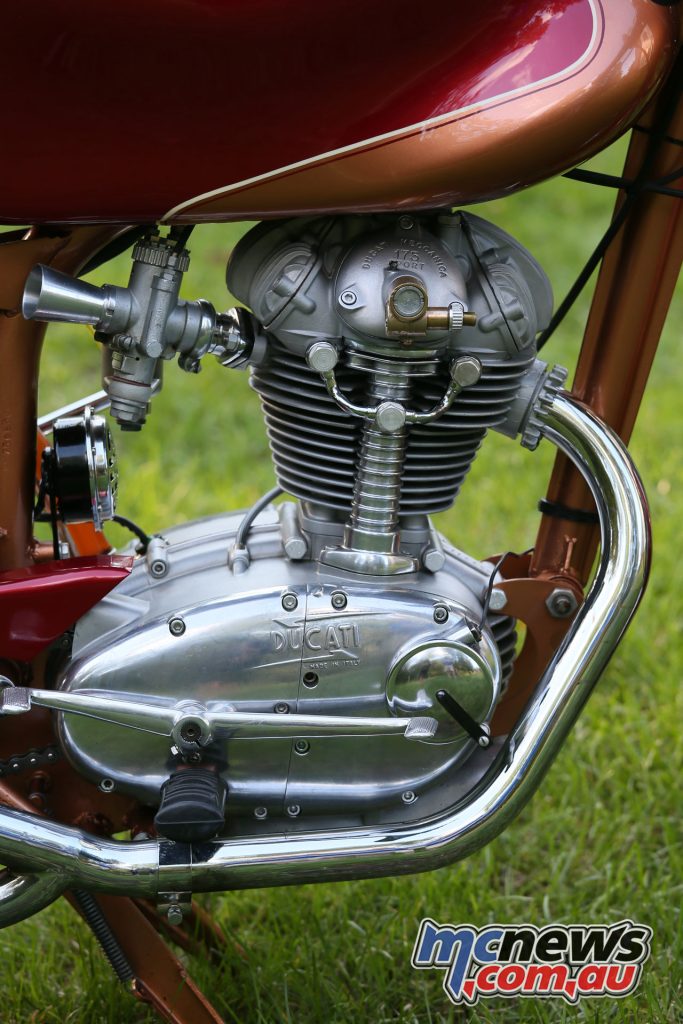
Although the general engine layout followed the 100 and 125 cc Gran Sport, the overall dimensions were increased slightly to accommodate the larger capacity and allow for a future increases in capacity. Inside the cylinder head the pair of valves were still set at an included angle of 80 degrees. While this wide included angle would limit ultimate horsepower Ducati persevered with it until the Pantah in 1979.
Breathing was through a single 22.5mm remote float bowl Dell’Orto SSI (Super Sport Inclinato) carburettor, and with a compression ratio of 8.0:1, the 62 x 57.8 mm single produced 14 horsepower at 8000 rpm. The all-alloy engine looked exactly what it was; a race-bred engine adapted for the street.
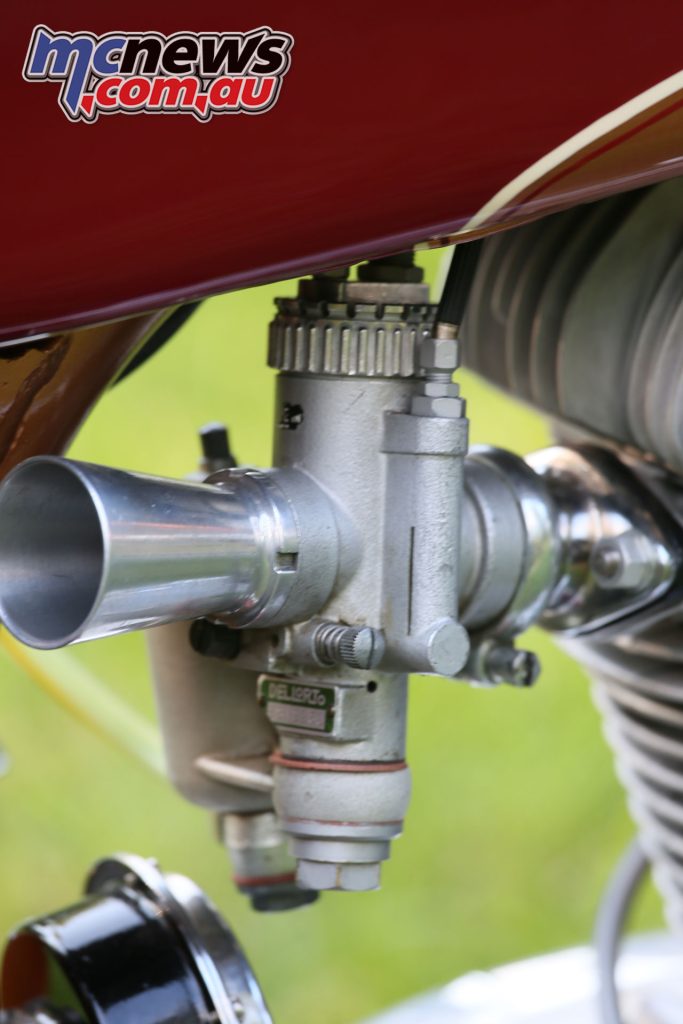
The chassis was also based on that of the Gran Sport, with a single downtube frame that utilized the engine as a stressed member. This feature would also become Ducati trademark.
The suspension was conventional, with a slender 31.5 mm Gualandi front fork and a pair of Marzocchi shock absorbers at the rear. Also setting the 175 Sport apart from other motorcycles in 1957 was the sculptured fuel tank.
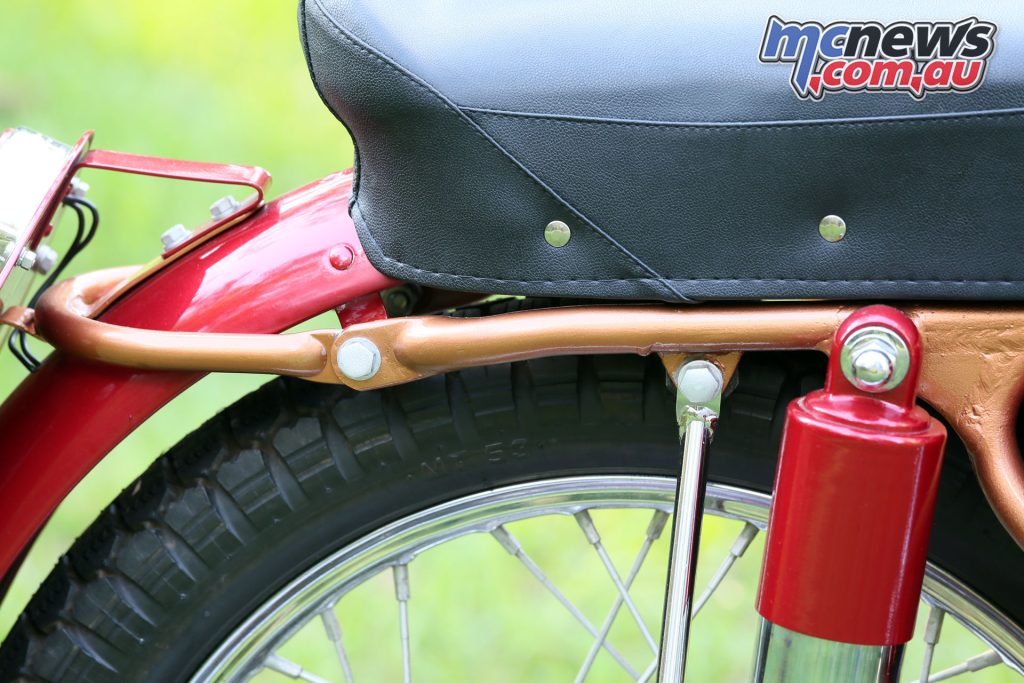
Designed purely to follow function this featured arm recesses to allow a crouched rider to hug the motorcycle while gripping the clip-on handlebars. There were even eyelets in the tank to secure a chin pad for those boy racers who really wanted to get their head down. Although the Grimeca drum brakes were large for such a small motorcycle (180 mm on the front and 160 mm on the rear), the 18-inch tyres were narrow (2.50 and 2.75-inch).
Typically Italian features included light aluminium wheel rims and 6-volt electrics. This provided extremely marginal lighting and with the 175 it was best to be home before dark. Ignition was by battery and coil, the points driven from the right-side timing chest.

By modern standards the 175 Sport was a tiny motorcycle. The dry weight was only 104 kg, the wheelbase 1320 mm and the seat height only 750 mm. Although the performance was lively, with a claimed top speed of 130 km/h, it would take a bit of coaxing to obtain this speed.
The rider needed to be jockey-sized and applied to the tank like a decal. When the 175 Sport was released at the Milan Show at the end of 1956 it created a similar sensation that the Panigale V4 did at the same venue in 2017.
At the time Ducati was better known for Cucciolo clip-on engines and mundane overhead valve pushrod singles so the garish colours and racing orientation was unprecedented. The 175 Sport was a bold statement that said this small company from Borgo Panigale was serious about building sporting motorcycles based on their successful racers.
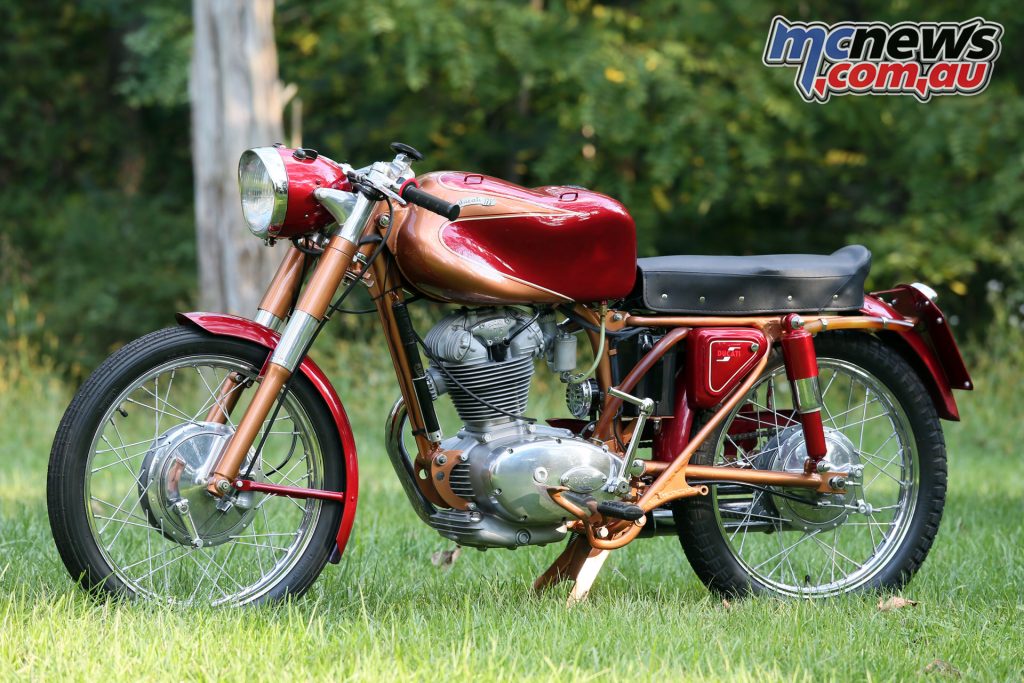
The 175’s release also coincided with a boom in motorcycle sales, and more than three million motorcycles over 50 cc were sold in Italy during 1956. With a theoretical production capacity of 200 motorcycles a day Ducati was well equipped to meet demand.
The 175 Sport’s immediate success (Ducati 175s accounted for 25 per cent of 175 cc sales in Italy during 1957) resulted in a proliferation of Ducati overhead camshaft models during the next few years. Coinciding with the 175 Sport’s release was a higher performance 175 Super Sport.
This had a higher 9.5:1 compression ratio and hotter camshaft. The engine produced a claimed 17 horsepower and the top speed was 150 km/h. In England the 175 Sport was called the 175 Silverstone, and with the tuning kit was known as the 175 Silverstone Super.
The success of the 175 Sport in 1957 resulted in the 175 Formula 3 catalogue racers becoming available for 1959. These were very expensive. In England the 175 F3 cost more than a 500cc Matchless G50, so only a few were sold.
As the first in the line of production overhead camshaft singles, the 175 Sport enjoys a particular status in Ducati singles’ hierarchy. It may seem generations removed from a Panigale V4, or even a bevel-drive 900 Super Sport, but this was where genesis began.
Ducati 175 Sport Specifications
| Ducati 175 Sport Specifications | |
| Engine | Air-cooled, four-stroke SOHC, single-cylinder, shaft and bevel driven, two-valve, 175 cc |
| Bore x stroke | 62 x 57.8 mm |
| Compression | 8.5:1 |
| Induction | Remote float bowl Dell’Orto SSI carburettor |
| Start | Kick |
| Power | 10.4 kW (14 hp) @ 8000 rpm |
| Gearbox | Four-speed |
| Final drive | Chain |
| Frame | Single-cradle tubular frame |
| Suspension | Marzocchi telescopic fork, dual shocks, preload adjustable |
| Brakes | 180 mm front drum, 160 mm rear drum |
| Tyres | 2.40 x 18, 2.75 x 18 inch (R) |
| L x H | 1950, 960 mm |
| Wheelbase | 1320 mm |
| Seat height | 750 mm |
| Weight | 106 kg dry |























